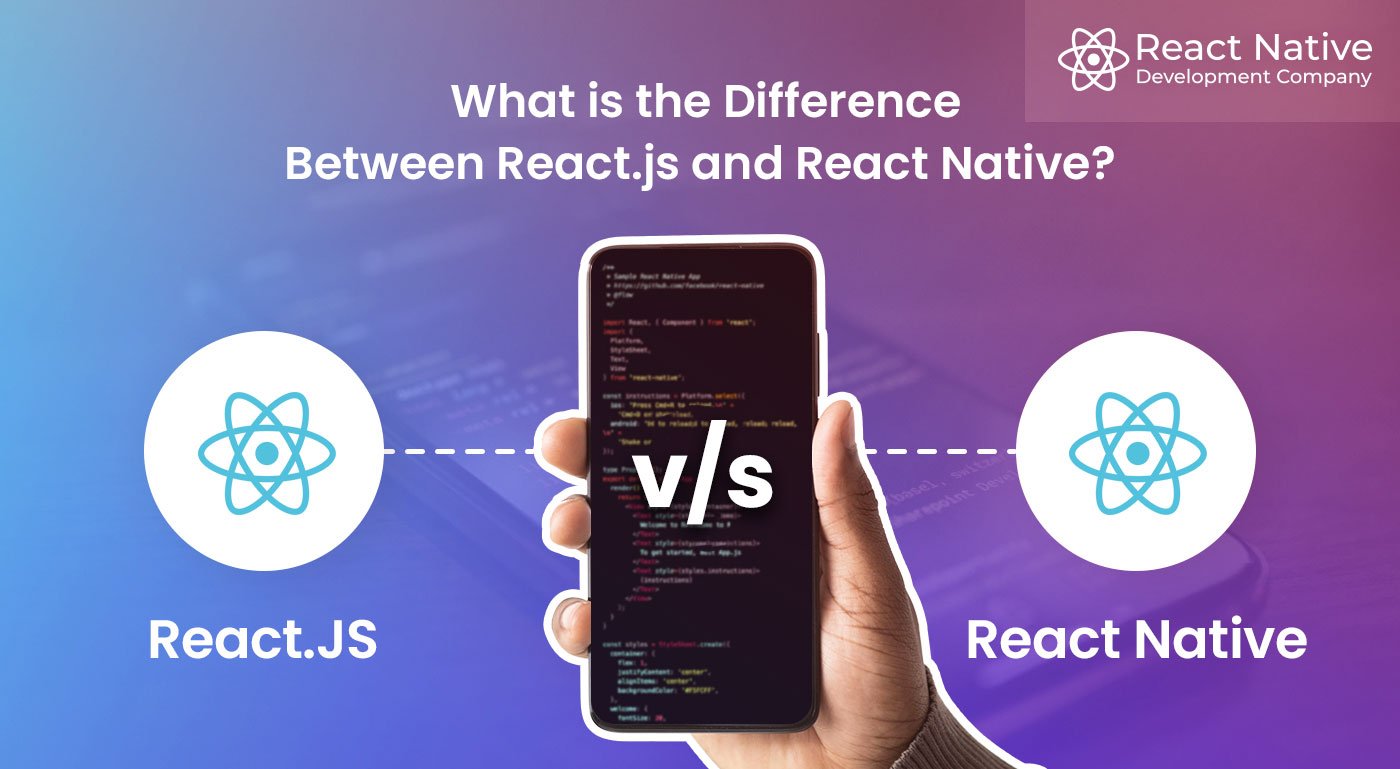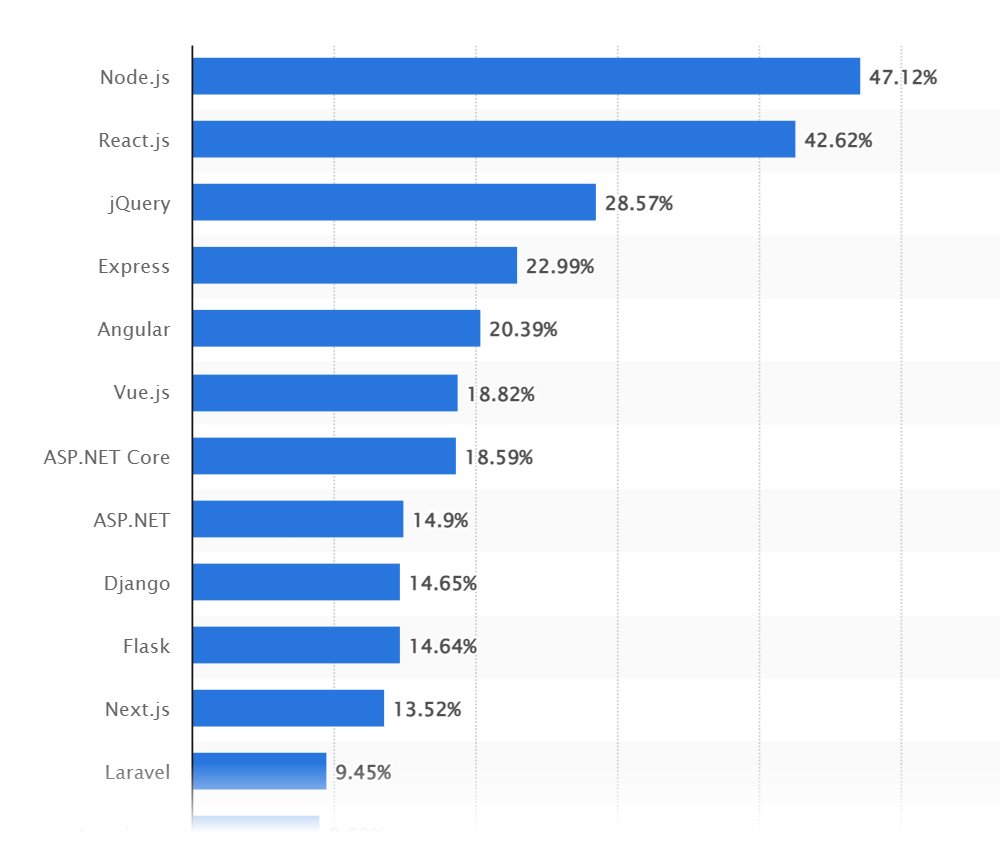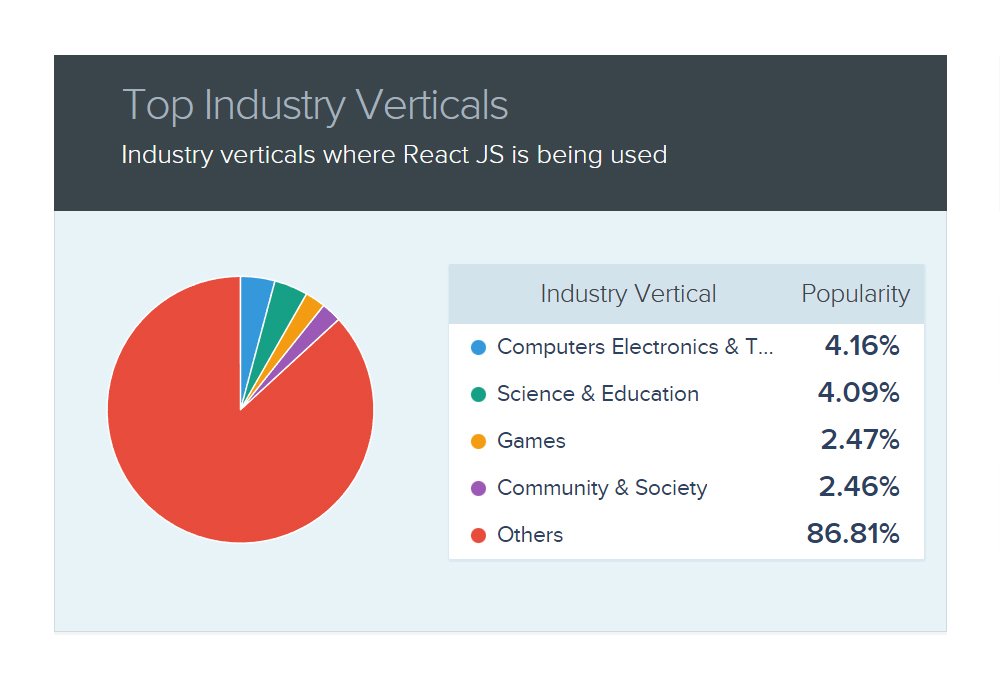
The Difference Between React.js and React Native
Do you ever wonder how to build a dynamic, user-friendly app for web and mobile platforms? Look no further than React.js and React Native! These frameworks offer developers powerful tools to create engaging interfaces, but what makes them unique?
Although React.js and React Native look the same, separated by a minor change, they are used in two different aspects. One is used to build web applications with the best interfaces, while the other is used to create mobile apps. These two platforms come with their benefits, allowing you to become productive.
This post will guide you through everything about React versus React Native.
React.js
What is React.js?
React.js is a front-end JavaScript framework used to construct composable user interfaces predictably and effectively. This open-source and component-based framework develops the applicationʼs viewpoint.
By building reusable components, which you may think of as separate Lego blocks, you design your applications with React.js. Combined, these pieces are individual components of a final interface, forming the applicationʼs user interface.
By offering the best and most effective rendering execution, React.jsʼs primary function in an application is to manage the view layer of that application, much like the V in a model view controller (MVC) paradigm.
React.js encourages developers to break down these sophisticated user interfaces into distinct, reusable components that serve as the foundation for the entire UI rather than treating the whole UI as a single entity. 42.62% of developers use React.js to build their web frameworks.

This allows the ReactJS framework to render web pages more quickly and develop highly dynamic and responsive online applications by combining the speed and efficiency of JavaScript with a more effective way to manipulate the DOM.
- React.js uses Model View Controller (MVC), and the view layer takes responsibility for handling both mobile and web applications.
- React is best known for its ability to create mobile apps and single-page websites.
Advantages of React.js
There are many reasons why ReactJS should be your first choice for website UI development. Here are a few highlights of the most significant ones and why these particulars are so crucial:
- Faster — Apps designed using React.js are fast, flexible, and can manage complicated upgrades.
- Modular — This platform allows you to write several small, reusable code files without producing vast and dense files. Reactʼs modularity is the best remedy for JavaScriptʼs visibility problems.
- Scalable — React.js perform best in the case of large programs that deliver a massive amount of data changes.
- Flexibility — React differs from other approaches by decomposing them into components while creating user interfaces, which is crucial in complicated applications.
- Popular — ReactJS performs better than other JavaScript languages because it implements a virtual DOM.
- Easy to learn — The learning curve is not complicated because anybody can learn React.js with the basics of HTML and JavaScript.
- SEO-friendly and server-side rendering — ReactJS websites are renowned for their server-side rendering feature, which is also SEO-friendly. Compared to goods that use client-side rendering, React.js makes apps speedier and significantly better for search engine ranking. React can even take up more space on the search results page and create more options for website SEO.
- Reusability — Reusable UI components by React speed up development and debugging.
- Community — Many extensions and tools are available for ReactJS developers. More chances become available along with stunning out-of-the-box functionality once you realize how enormous the React galaxy is. It has a community supported by Meta (Facebook), which helps on the way.
So, these are a few React.js advantages why people prefer it.

Applications of React.js
React has grown in popularity and stability as a result of its capacity to build online applications that are quick, effective, and scalable.

Thousands of online applications, from established businesses to fresh startups, use React.js to build their applications. Among those mentioned are:
- WhatsApp Web
- Reddit
- Uber
- Airbnb
- Facebook
- Khan Academy
- Codecademy
- SoundCloud
- Instagram
- Netflix
- The New York Times
- Discord
What is React Native?
An open-source JavaScript framework, React Native allows you to create apps for different operating systems from a single source code, including iOS, Android, and the web. It is based on React and brings all its splendor to creating mobile apps.
Facebook gave birth to React Native frameworks. The goal of the hackathon project React Native was to eliminate the largest pain point for the company — maintaining two code bases for their app. Duplication of effort and occasionally approaching the same issue from two separate angles are a few disadvantages you can overcome using React Native.
React Native builds the appʼs user interface in JavaScript while utilizing native-OS views. This framework allows you to implement it in OS-native languages for more complex features.
Also Read: What is ReactJS app development, and its features?
Advantages of React Native
There are many reasons why you should prefer using React Native to build mobile apps. Below are a few advantages.
- Reusability of code — The significant and most compelling benefit of React Native is its ability to create effectively for several platforms at once. Further advantages of using a single code base across various platforms include quicker app development and time to market, simpler and less expensive maintenance (you have to worry about one code base instead of many), and easier onboarding for new engineers.
- Hot Reloading Capability — With hot reloading capability, you can view changes to your code in real-time without refreshing anything. Because it gives you immediate feedback on any changes made to the code, this ostensibly tiny change can significantly enhance the development process and increase productivity.
- Performance — React Nativeʼs “bridge” concept can be groundbreaking compared to existing cross-platform development approaches. Due to the possibility of using natively written code, React Native applications are quicker than web-based cross-platform solutions.
- Cost Effectiveness — Cross-platform programming is primarily done to cut down on costs. You often require a small team to complete the project because you can reuse the code across numerous platforms.
- Growing Community — The community behind the open-source framework React Native is thriving and growing. Facebookʼs involvement is essential to note because they are always trying to expand and improve the framework.
This means that even if you encounter a problem that React Native has not yet solved, you may find a group of people eager to help you because they care about strengthening and making the framework more reliable.
- Growing Scope — React Native is a relatively young framework growing enormously with many users. It indicates that this framework is constantly changing to get better and that fresh additions and upgrades are frequently made. We anticipate seeing approaches to create quicker and more effective applications. Also, read about Which Mobile App Development Framework Is Right For You?
Applications of React Native
Given all the advantages and disadvantages, it should be no surprise that many businesses design mobile apps using React Native. It is noted that 38% of software developers use React Native Frameworks for their cross-platform applications.

From social media to online shopping platforms, here are a few brands that have React Native platforms.
- Facebook
- Instagram
- SoundCloud Pulse
- Townske
- Gyroscope
- Facebook Ads
- Walmart
- Bloomberg
- Wix
- Delivery.com
Latest React Native Release 18
As of March 2022, React 18 is the latest version of the popular JavaScript library for building user interfaces. This version brings several new features and enhancements that make it even more powerful and easier to use for developers.
- One of the most significant new features in React 18 is introducing the “concurrent rendering” model. This new model improves the performance of React applications by enabling them to execute multiple tasks concurrently.
This means that React can continue rendering new UI parts even if itʼs waiting for other tasks to complete, which can result in faster and more responsive user interfaces.
- Another important feature in React 18 is the introduction of the “useTransition” hook. This hook allows developers to add animations and transitions to their applications more easily. It does this by enabling developers to defer updates to the UI until an animation or transition has been completed. This can make applications feel smoother and more polished, resulting in a better user experience.
React vs. React Native: Key Differences Between React.js and React Native
While there are several differences between React.js and React Native, below are a few primary and notable ones.
- React.js is a base derivative of React DOM for the web platform, whereas React Native is a base derivative of React Native in and of itself.
- In the end, Reactjs is a JavaScript library that allows programmers to build attractive and productive UI Layers. In contrast, React Native is a complete framework for developing cross-platform apps for the web, iOS, and Android operating systems.
- React Native uses native APIs to render components on mobile devices, while React.js uses virtual DOM to render browser code.
- React.js programs provide HTML in the user interface but React Native apps use JSX, essentially JavaScript, to give the user interface.
- With React.js, CSS plays a role in designing styles. However, in React Native, styling is created using a stylesheet.
- Similar to web development, animation in React.js can be done using CSS. However, using an animated API, many React Native application components are made to move when using React Native.
- React.js is the best choice for creating a high-performing, dynamic, and responsive user interface for web interfaces. The best option for giving mobile apps a completely native experience is React Native.
Get the best of React versus React Native
React.js or React and React Native focus on two essential aspects of todayʼs internet world — website interfaces and mobile apps. Developed by Meta (Facebook) to ease their way of developing their applications, these platforms went a long way to assist developers and other businesses. Seeing the features these platforms offer, they are widely adopted by the world and are changing how developers function.
To take advantage of React Native JS, you can get in touch with us at React Native Development Company and help your business grow with the new trends. also read more about ReactJS app development and its features. and must know about React Native Upgrade Helper: Streamline Your App Upgrades with Ease.
Frequently Asked Questions
React developers, sometimes called front-end or JavaScript developers, develop JavaScript-based web or mobile applications. The app's front-end (UI) portion, which the user sees and interacts with, is built using React. React developers are accountable for ensuring that the user experience is as seamless and easy as feasible.
They can accomplish many incredible things by combining their expertise in React with other technologies like HTML, CSS, and more.
Although built on React, the React Native framework doesn't target the browser as React does. It instead focuses on mobile platforms. In other words, React Native is identical to React, except that it uses native rather than web components.
Using a well-known JavaScript framework, you can create true native mobile applications using React Native. Also, unless you are creating an app that interacts with the platform's API, which is uncommon, you do not need to understand iOS or Android programming to build mobile applications. You can create iOS and Android apps simultaneously because most of the code is transferable across the two platforms.
The following is a list of React's limitations:
- React is merely a library and not an entire framework.
- Its library is massive and requires time to apprehend.
- For new programmers, it could be a little challenging to comprehend
- Once inline templating and JSX are used, the coding becomes more complicated.
The abbreviation for JavaScript XML is JSX. It is a specific kind of file used by React that combines HTML-like template syntax with the expressiveness of JavaScript. The HTML file is quite simple to understand as a result. This file strengthens and accelerates the performance of apps.
React Native Platform Web is most suitable for building complex web applications that require a lot of interactivity and responsiveness, such as e-commerce sites, social media platforms, and online marketplaces.

